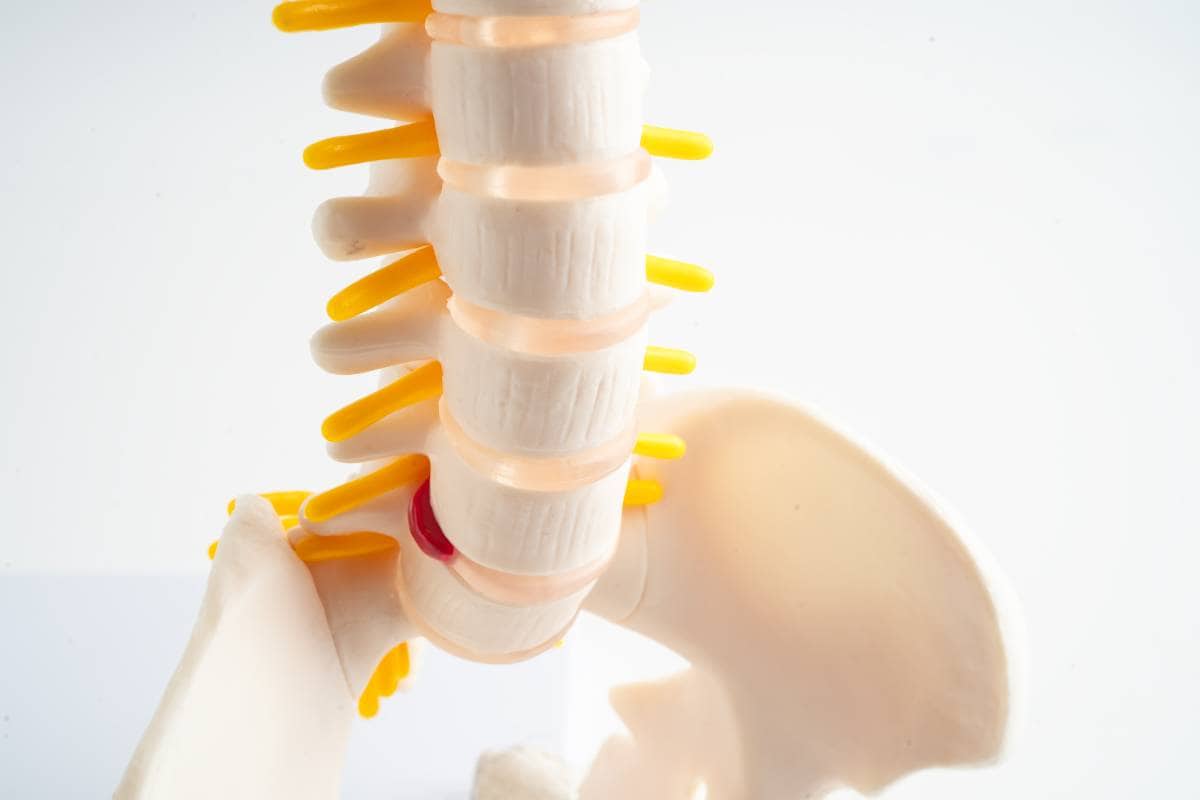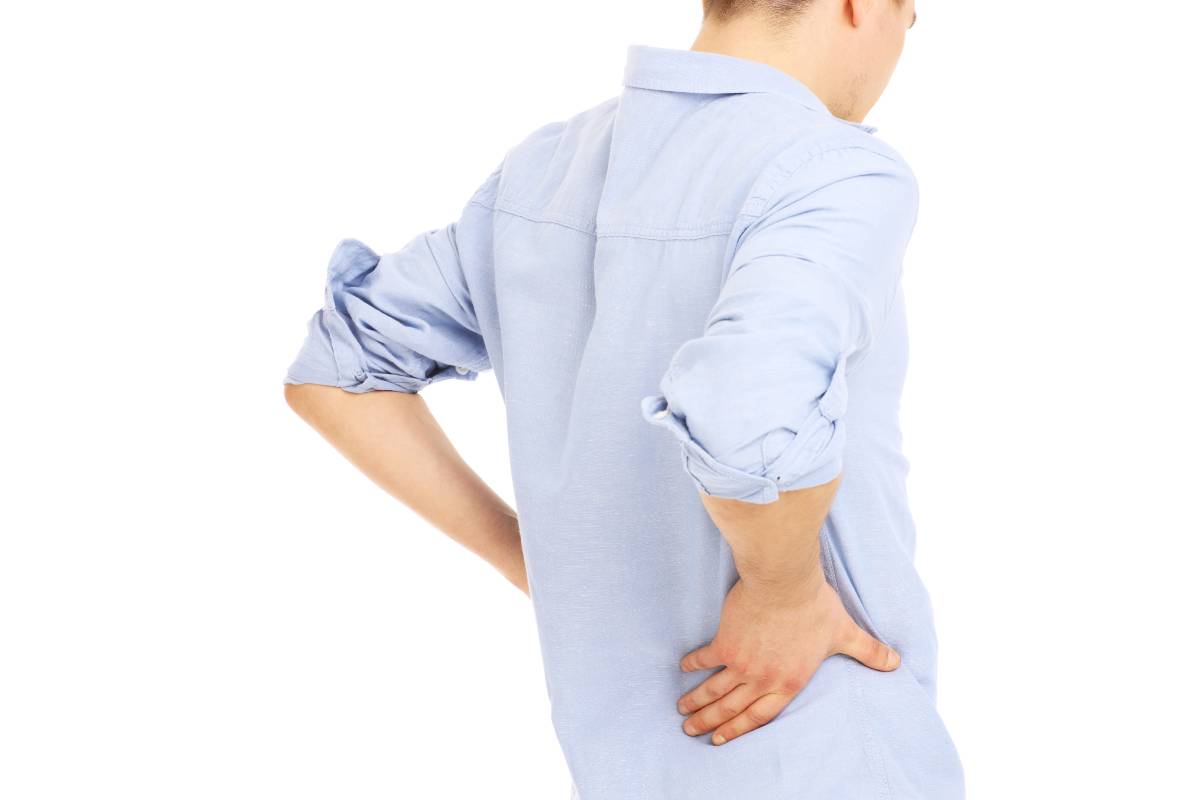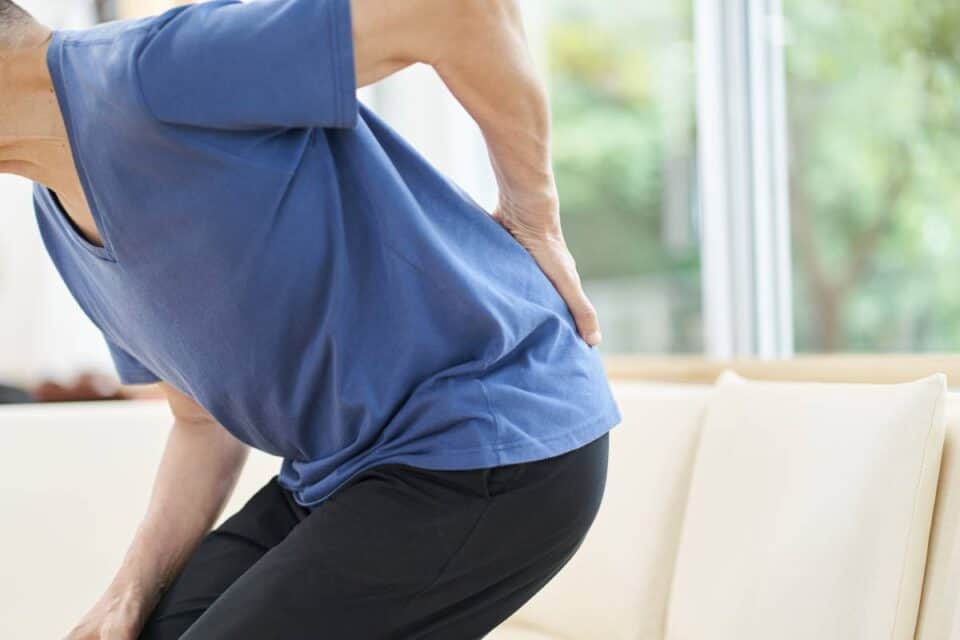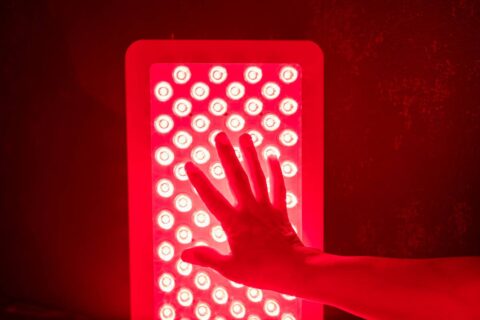Today, we’re tackling a common yet challenging issue: healing bulging discs naturally. If you’re wincing at the thought of surgery, I’ve got good news. There are plenty of non-invasive ways to find relief and promote healing. I’m excited to share these natural approaches that have helped countless patients in my practice. Ready to say goodbye to that nagging back pain? Let’s get started!
Key Takeaways
- Bulging discs can often be healed naturally through a combination of chiropractic care, physical therapy, and lifestyle modifications.
- A holistic approach including proper nutrition, exercise, and stress management is crucial for effective healing.
- Patience and consistency are key – natural healing takes time but can lead to long-lasting relief without invasive procedures.
Table of Contents
- Understanding the Anatomy of the Spine
- The Role of Posture in Disc Health
- The Impact of Stress on Disc Health
- The Importance of Proper Diagnosis
- Chiropractic Care for Bulging Discs
- Exercise Rehabilitation
- Lifestyle Modifications
- Natural Pain Relief Methods
- Nutrition and Hydration
- Sleep Posture and Support
- Monitoring Progress and Seeking Professional Help
- The BodyFix: Advanced Solutions for Spine and Nerve Health
- FAQs
- Conclusion
Understanding the Anatomy of the Spine
Let’s take a moment to understand the amazing structure we’re dealing with. Your spine is a complex system made up of 33 vertebrae, stacked on top of each other like a tower of building blocks.
Between each vertebra, we have our intervertebral discs – think of them as nature’s shock absorbers. These discs have a tough outer layer (the annulus fibrosus) and a gel-like center (the nucleus pulposus).
When we talk about a bulging disc, we’re referring to a situation where the outer layer weakens and allows the disc to bulge outward.
This can put pressure on nearby nerves, leading to the pain and discomfort many of you are familiar with. Understanding this structure helps us appreciate why certain treatments and lifestyle changes can be so effective in promoting healing.
Is SpineMed Your Path to a Pain-Free Life?
Tired of living with back pain? Take our quick quiz to see if you’re a candidate for the breakthrough SpineMed Treatment. It only takes a few minutes to potentially change your life.
The Role of Posture in Disc Health
We’ve touched on posture briefly, but it deserves its own spotlight. Your posture plays a crucial role in the health of your spinal discs. Poor posture, especially over long periods, can put uneven pressure on your discs, potentially leading to bulging or herniations.
Think about how much time you spend sitting at a desk, looking at your phone, or lounging on the couch. Each of these activities, if done with poor posture, can contribute to disc problems. The good news? Improving your posture can not only help prevent disc issues but can also aid in the healing process.
Some tips for better posture include:
- Keeping your ears aligned with your shoulders when sitting or standing
- Using a lumbar support cushion when sitting for long periods
- Taking regular breaks to stand and stretch
- Being mindful of your posture during daily activities
Good posture isn’t about rigidly holding yourself in an uncomfortable position. It’s about finding a neutral spine position that feels natural and comfortable.
The Impact of Stress on Disc Health
Stress isn’t just a mental health issue – it can have real, physical effects on your body, including your spinal discs. When you’re stressed, your body releases hormones like cortisol, which can increase chronic inflammation and cause pain ranging from a deep ache or a sharp shooting pain. This event can exacerbate disc problems and slow down the healing process. Remember inflammation is our friend as it’s a natural aspect of the healing process of our body. But when we don’t fix the cause then it can become our foe.
Moreover, stress often leads to muscle tension, particularly in the back and neck. This tension can pull your spine out of alignment, putting additional pressure on your discs causing them to dehydrate over time and become brittle. It’s a vicious cycle – disc pain causes stress, and stress causing disc pain. Add bad posture to the mix and we have ingredients for disaster.
That’s why stress management techniques are an essential part of any disc healing program. Practices like meditation, deep breathing exercises, and progressive muscle relaxation can help reduce stress levels and promote healing. Even simple activities like taking a warm bath or listening to calming music can make a difference. Having a deep prayer into God is my personal go-to solution.
The Importance of Proper Diagnosis
One aspect of spinal health that often gets overlooked is the crucial importance of a proper diagnosis. With conditions like bulging discs, the symptoms can sometimes mimic other spinal issues like SI joint inflammation, leading to ineffective treatments if not correctly identified.
At our clinic, we invest heavily in diagnostic technology and expertise. This includes advanced imaging techniques, thorough physical examinations, and detailed patient history analysis. We believe that understanding the full picture of a patient’s condition is key to developing an effective treatment plan.
This diagnostic process isn’t just about identifying the problem – it’s about understanding its root causes, how it’s affecting your daily life, and what approach will be most effective for your unique situation. It’s this attention to detail in the diagnostic phase that often sets the foundation for successful treatment outcomes. Sometimes referring accordingly to other specialists is a must because at the end of the day, it’s about you and your health.

Chiropractic Care for Bulging Discs
Now, let’s talk about my bread and butter – chiropractic care. As a chiropractor, I’ve seen firsthand how effective this approach can be for treating bulging discs.
Here’s the lowdown: spinal adjustments are the cornerstone of chiropractic treatment.1 These gentle manipulations help to realign the spine through the facet joints, indirectly reduce pressure on the affected disc, and improve overall spinal range of motion.
But it’s not just about cracking backs (although that can be pretty satisfying). A good chiropractor will take a holistic approach, which should include spinal decompression therapy (direct solution to disc herniations), soft tissue therapy to relax tight muscles, and guidance on posture and ergonomics.
The frequency of treatments will depend on your specific case, but typically, you might start with 2-3 visits per week, gradually tapering off as you improve.
Exercise Rehabilitation
While chiropractic adjusting (cracks) is fantastic for indirectly treating disc problems, it’s not the only tool in our toolbox for managing lower back pain. Exercise rehab plays a crucial role in healing and preventing future issues. Even in the initial acute stage of inflammation it’s important to start utilizing muscle contraction techniques no matter how small in order to get lymphatic drainage of the damaged disc.
Core strengthening exercises which include your glute muscles are like giving your spine its own personal bodyguard. 2Planks, bird dogs, and hip thrusts are all great options for strengthening back muscles and preventing lower back pain.
Then there’s stretching – McKenzie’s exercises focus on extending the spine to help centralize pain, while Williams’s flexion exercises strengthen the lower back and abdominal muscles. For most folks, we start with the extension because we are usually always catching ourselves flexing hunched forward in bad posture.
And don’t forget about low-impact cardio like swimming, walking, or stationary biking to induce more systemic blood flow. Increased blow flow means more oxygen which means more healing.
The form is everything! It’s better to do a few exercises correctly than a bunch with poor form. If you’re unsure, working with a physical therapist can ensure you’re on the right track.
Lifestyle Modifications
Your day-to-day habits play a huge role in your spine health. Let’s start with ergonomics – is your workspace set up properly?
Make sure your chair supports your lower back, your computer screen is at eye level, and your feet can rest flat on the floor. When it comes to general lifting, always use your legs, not your back unless you are practicing straight leg deadlifts which is a great exercise to stabilize your whole back side.
And if something’s too heavy during your healing process, don’t be a hero – ask for help!
Posture is a biggie when it comes to preventing disc problems and maintaining overall spine health.3
A good example is our military heroes. Look at them when they go to solute. Do you see them slouching?
Good posture reduces stress on your spine. And let’s talk about weight management – extra pounds put extra strain on your back, so maintaining a healthy weight can significantly reduce disc pressure.
Last but not least, don’t forget about stress reduction, as it can help alleviate lower back pain. 4
Stress causes muscle tension, which can exacerbate back pain and lead to complications like a ruptured disc. Try meditation, deep breathing, or yoga to keep stress in check.
Natural Pain Relief Methods
I want to share my perspective on natural pain relief for bulging discs. While many still recommend ice for acute pain, I’ve come to believe that cold therapy may actually hinder recovery. I’ve written extensively about this in my article “Ice vs. Heat: Why Ice Might Be Your Injury’s Worst Enemy.”
Instead, I advocate for heat therapy to relax muscles and improve circulation. Massage and acupuncture can also be beneficial.
For a more in-depth look at why I don’t recommend ice therapy and prefer heat for most injuries, I encourage you to read my full article. It delves into the science behind why forms of heat can be more effective in promoting healing and pain relief. Just ask yourself why are we so ANTI-Inflammation when in fact inflammation is Stage 1 of our 3-stage wound healing process. We can’t heal without inflammation! So why are we trying to stop it?
Nutrition and Hydration
You are what you eat, and that includes your spinal discs! A healthy diet can support healing and modulate inflammation. Focus on foods like fatty fish (salmon, mackerel), berries, leafy greens, and nuts and seeds.
Make sure you’re getting essential nutrients too – vitamin C for collagen production, calcium and vitamin D for bone health, and magnesium for muscle relaxation. And let’s not forget about hydration – your discs are mostly water, so staying hydrated is crucial. Aim for at least 8 glasses of water a day. I always tell my patients that urine should be a see-through yellow.
To complement a nutritious diet, consider experiencing the benefits of our Xymogen Supplementation. Xymogen offers targeted nutritional support to address specific health concerns and enhance your body’s natural healing processes. I always start out my day with their Multi Mineral and Multi-Vitamin Complex.
These high-quality supplements can help fill any nutritional gaps and provide additional support for spine health, potentially aiding in the management of disc-related issues.
Pro tip: consider adding bone broth to your diet. It’s rich in collagen and other nutrients that support joint health and can be beneficial in treating back muscles and disc problems.

Sleep Posture and Support
We spend about a third of our lives sleeping, so it’s crucial to get it right. The best sleeping positions for your spine are on your back with a pillow under your knees, or on your side with a pillow between your knees. When it comes to mattresses, look for a medium-firm one that supports your spine’s natural curve. And don’t forget about your pillow – it should keep your neck aligned with your spine. Memory foam pillows can be a good option for many people. Check out bioposture.com for top quality material.
Monitoring Progress and Seeking Professional Help
Healing takes time, but you should see gradual improvement.
Keep an eye out for decreased pain intensity and frequency, improved range of motion, better sleep quality, and increased ability to perform daily activities. If you’re not seeing improvement after a few weeks, or if your symptoms worsen, it’s time to check in with a healthcare professional.
They might recommend additional treatments or imaging to get a clearer picture of what’s going on.
The BodyFix: Advanced Solutions for Spine and Nerve Health
Now, let me introduce you to something we’re really excited about at our practice – the BodyFix approach.
While chiropractic care is a fantastic foundation, we’ve found that combining it with advanced treatments like spinal decompression and neuropathy care can lead to even better outcomes for our patients.
Our SpineMed decompression therapy is a game-changer for those dealing with severe disc issues. It’s non-surgical, painless, and has helped many patients avoid going under the knife. The key is its ability to create negative pressure within the disc, which can help retract bulging disc material and promote healing.
But we don’t stop at spinal issues.
We’ve also become leaders in treating neuropathy, including diabetic neuropathy and post-chemotherapy neuropathy. These conditions can be incredibly frustrating and painful, but we’ve developed protocols that have given many patients their quality of life back.
What sets us apart is our commitment to expert diagnosis and personalized care. We don’t believe in one-size-fits-all solutions for treating conditions like low back pain or disc herniation. Instead, we take the time to thoroughly assess each patient’s condition and develop a tailored treatment plan.
Whether you’re dealing with chronic back pain, facing the prospect of spinal surgery, or struggling with the tingling and numbness of a type of neuropathy, we’re here to offer hope and effective solutions.
Is SpineMed Your Path to a Pain-Free Life?
Tired of living with back pain? Take our quick quiz to see if you’re a candidate for the breakthrough SpineMed Treatment. It only takes a few minutes to potentially change your life.
FAQs
How often should I see a chiropractor?
How long does it typically take to heal a bulging disc naturally?
Is it safe to continue working with a bulging disc?
Can stress make my bulging disc symptoms worse?
How effective is SpineMED therapy for treating bulging discs?
Conclusion
There you have it – a comprehensive guide to healing your bulging disc naturally. Remember, everyone’s journey is different, and what works for one person might not work for another. The key is to be patient, consistent, and listen to your body but at the same time don’t let your body control your mindful state of emotion.
By combining chiropractic care, exercise rehab, lifestyle modifications, and natural pain relief methods, many people find significant relief from their bulging disc symptoms without resorting to invasive procedures. By the time our patients are done with treatments they realize not only are they out of pain but their way of life and quality of life has dramatically changed. This is what we call the win win solution.
If you’re dealing with any other spine-related issues, and want personalized guidance on your healing journey, I’d love to help. Schedule a consultation with me, Dr. Mario Tolj, and let’s work together to get you back to feeling your best.
Whether it’s through our advanced SpineMed decompression therapy, neuropathy treatments, or a combination of treatment options, we’re here to help you avoid surgery and find lasting relief from herniated disc pain.
Blog Disclaimer: The information provided on The BodyFix Chiro blog is for general informational and educational purposes only and is not intended as medical advice. These articles reflect our opinions and experiences but should not be used to diagnose or treat any health conditions. Always consult with your physician, chiropractor, or other qualified healthcare provider before starting any new treatment, exercise program, or making changes to your health routine. Any actions you take based on information from this blog are entirely at your own risk, and The BodyFix Chiro and its contributors disclaim any liability for the decisions you make based on this information.




